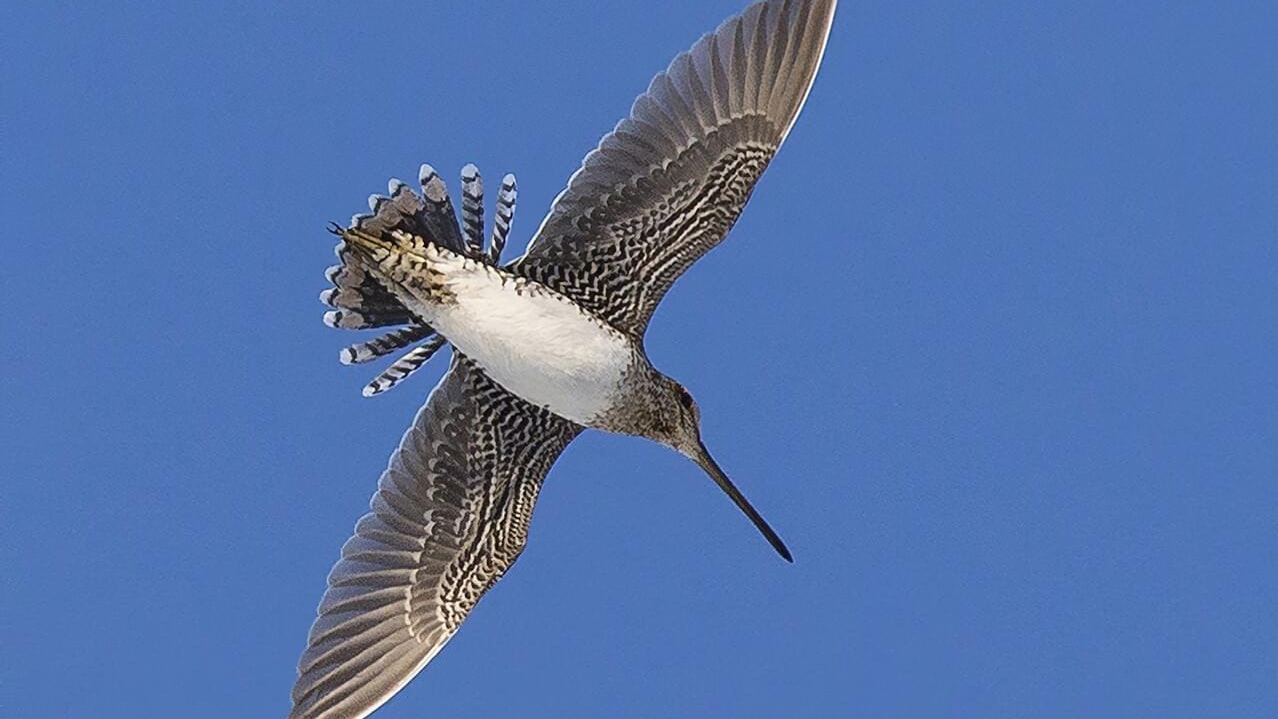Many outdoors enthusiasts have at one time or another been on the receiving end, the giving end – or both ends – of the “snipe hunt” practical joke.
However, snipe are an actual wetland bird species that can be legally hunted in Wyoming; the season opens Thursday.
That could bring at least some comforting sense of redemption to anybody who has, as one of the tenderfeet in camp, been sent into the woods at night on a “snipe hunt.”
More experienced campmates had sworn the snipe was out there. And the best way to catch it involved ridiculous antics, such as running about with your jacket pulled over your head, yelling “snipe, snipe!”
“A snipe hunt, a made-up hunt that is also known as a fool’s errand, is a type of practical joke that involves experienced people making fun of credulous newcomers by giving them an impossible or imaginary task,” said a Wikipedia entry about the practice.
A Real Bird
Wilson’s Snipe are a smallish wetland bird, averaging about 3 ½ ounces, with thin, pointy bills about 2 ½ inches long. They use their bills to probe soft soil for earthworms or other invertebrates, biologist Noelle Smith said in an e-mail to Cowboy State Daily. She’s the migratory game bird and wetland biologist with the Wyoming Game and Fish Department.
Snipe will also eat some plants, Smith said. Their bodies average 9-11 inches long, and they have wingspans of about 16-17 inches.
Be Prepared For Fast, Difficult Shots
Most statewide hunting seasons for snipe run Sept.1-Dec.16, according to the Game and Fish 2022 upland bird, small game and migratory bird hunting regulations. The daily bag limit is eight birds. The possession limit is 24.
Unlike many ducks and geese, snipe won’t come within shooting range of hunters’ blinds and decoys. The preferred method of bagging snipe is to jump-shoot them, usually along the wet edges of meadows and marshes, Smith said.
When hunting for snipe, expect challenging shots.
“They’re quick birds that will fly in a zig-zag pattern and make a ‘scaip’ call as they flush,” Smith said.
Hunters should also bear in mind that during hunting season, snipe are usually alone or only in small numbers.
“Be careful of (shooting at) a flock of shorebirds, as they’re likely a different species,” she said.
Snipe Habits
“During fall migration and early hunting season, Wilson’s snipe can be found across Wyoming’s basins statewide and in the eastern plains, including around moist floodplains or riparian areas within otherwise arid parts of the state,” Smith said.
“Numbers decrease over the winter. Wilson’s Snipe return across the state in the spring and breed here in the summer months,” she added.
Snipe breed in shallow, moist swampy areas, frequently on the edges of rivers or ponds, Smith said.
“In Wyoming this could include irrigated floodplains, especially the wetter areas with willows and sedges,” she said. “Winter habitat is similar.”
Other snipe breeding grounds include northern states and parts of Canada. During the winter, most migrate south.
“(There are) big concentrations in the Mississippi Delta, Texas, and Florida,” Smith said. “Some go all the way to Central and South America.”
So, if invited to go on a “snipe hunt” — be sure to ask, “which kind?”





